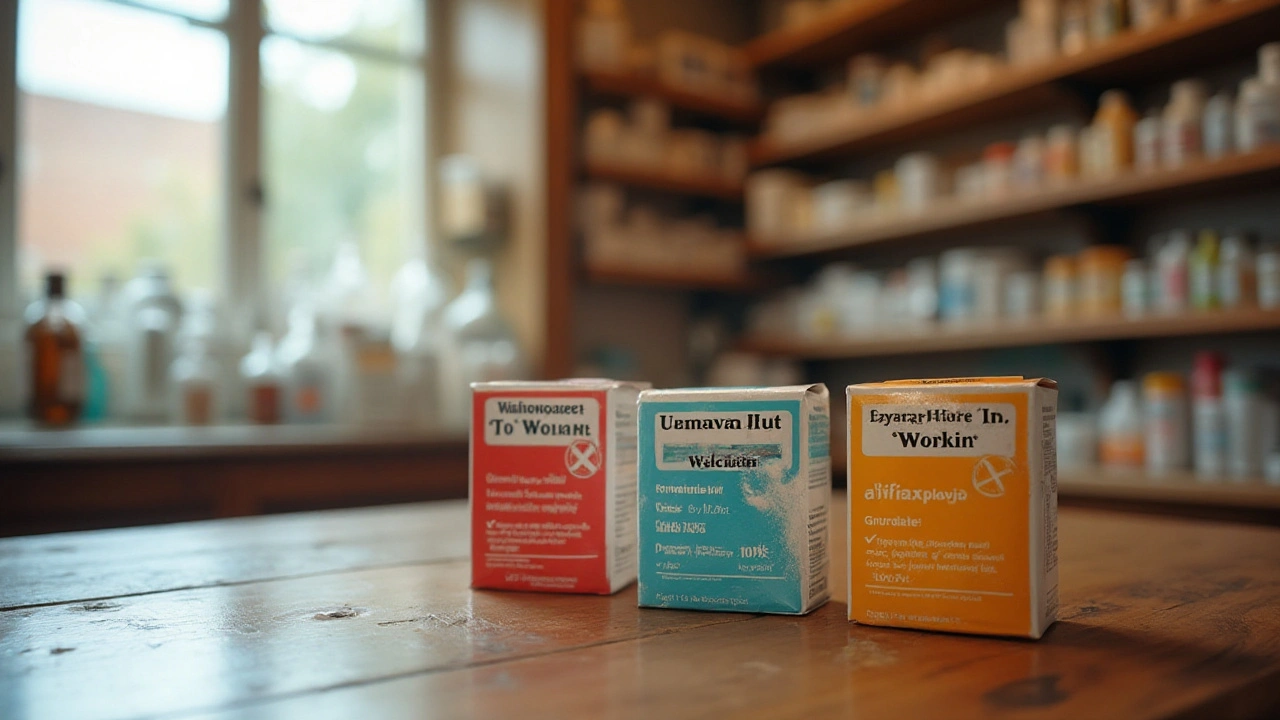Discover nine alternatives to Flagyl, each offering unique benefits in treating various infections. From Tinidazole to Rifaximin, these options offer diverse solutions for bacterial and protozoal infections. This article explores the pros and cons of each medication, helping you make informed decisions. Learn about the distinctive properties and potential side effects to choose the right treatment for your needs.
Antibiotics Alternatives: Practical Options When Antibiotics Aren't the Answer
Antibiotics save lives — but they don’t belong in every cough, sore throat, or minor wound. This page gives clear, practical alternatives you can consider when antibiotics aren’t needed or when you want to limit antibiotic use.
When to consider alternatives
If symptoms are mild, improving, or clearly viral (runny nose, most sore throats, typical colds), antibiotics usually won’t help. Use alternatives when a healthcare provider confirms an infection doesn’t need antibiotics, or while you wait for test results like a throat swab, urine culture, or skin culture. If you have high fever, spreading redness, severe pain, breathing trouble, or signs of sepsis, get medical care — those often need antibiotics or urgent treatment.
Practical alternatives and how to use them
Wound care and skin infections: Clean wounds with soap and water, remove debris, and keep the area covered. Topical antiseptics — povidone-iodine, chlorhexidine, or medical-grade honey (like Manuka) — reduce bacteria on the surface and help healing. For localized boils or abscesses, incision and drainage by a clinician is often the key treatment instead of systemic antibiotics.
Respiratory and ear infections: Many bronchitis and viral sinus infections get better with rest, fluids, fever control, nasal saline, steam, and cough care. For sinus pain, warm compresses and decongestants can help short-term. A rapid test or culture that shows no bacterial growth supports skipping antibiotics.
Urinary tract prevention and mild cases: Drink extra water and urinate often. For recurrent UTIs, behavioral steps — hydration, timed voiding, and post-sex urination — lower risk. Some people use cranberry products or D-mannose as prevention; the evidence is mixed but they can help some patients. Always see a clinician for strong symptoms, fever, or back pain.
Gut and recurrent infections: Probiotics can support gut balance during and after antibiotics, and some strains (like Saccharomyces boulardii) are used to reduce antibiotic-associated diarrhea. For C. difficile or severe gut infections, specialized medical treatment is needed, not home remedies.
Advanced and emerging options: Bacteriophage therapy (viruses that kill bacteria) and targeted antimicrobial peptides are promising in research and used in some specialized clinics. These aren’t routine yet, but they offer options when antibiotics fail or in resistant infections.
Prevention, diagnostics, and judgment: Vaccines, good hand hygiene, timely wound care, and avoiding unnecessary antibiotics are your best defenses. Ask your provider for rapid tests or cultures before starting antibiotics whenever possible. If a clinician prescribes an alternative strategy, follow the plan and know the red flags that require antibiotics or urgent care.
Want help choosing the right approach? Bring clear symptom details to your clinician, ask about testing, and discuss non-antibiotic options. That simple conversation can keep antibiotics working when you really need them.

